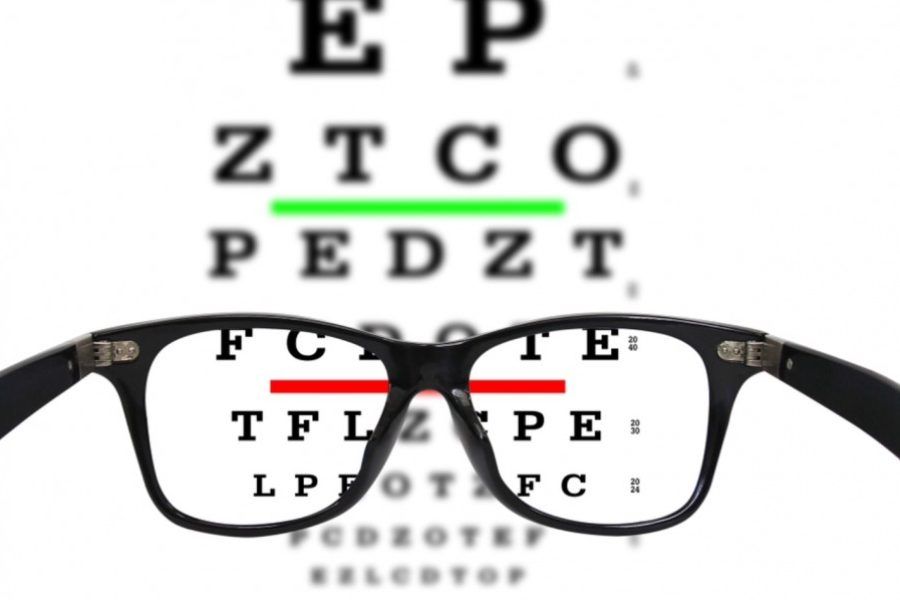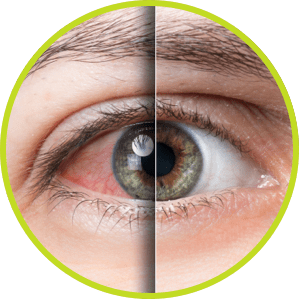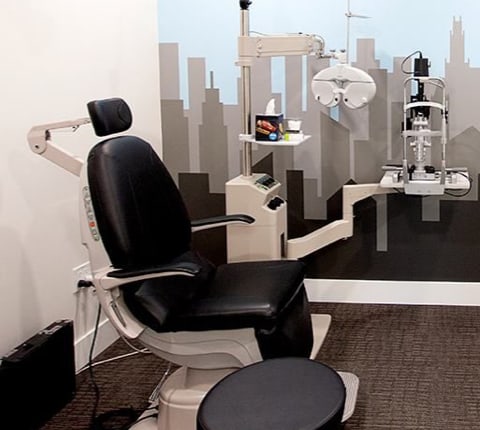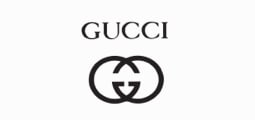Most people understand that having 20/20 vision is a good thing and that it means someone can see really well, but what do those numbers actually mean?
The first number of this mysterious fraction is simply how far away someone is from the letter chart in the office. The standard viewing distance is 20 feet (6 metres), so this first number is always the same. At this point, some of you may be wondering about the last time you had your eyes examined and if the exam room was actually 20 feet, or 6 metres long. The answer is most likely “No”. The truth is, almost all exam rooms are less than 20 feet, but there are ways around this optically with mirrors.
The next time you have an eye exam, look on the walls and you will likely see a mirror or two. When you sit down and look at the letter chart, the chart you are looking at is likely seen through a mirror. The chart and the mirror are precisely calculated to make the chart appear 20 feet away.
What does the second number mean?
The actual meaning for the second number has to do with the size of the letter you are looking at.
One of the first people to define “normal” vision was a man named Snellen. He decided that the normal visual system is able to recognize a letter that subtends 5 seconds of arc at a distance of 20 feet. You don’t have to understand what this means. Just know that this is small letter size. Basically what Mr. Snellen concluded is that if the visual system can recognize a letter this small at a distance of 20 feet (6 meters), that person has 20/20 vision. 6/6 vision is the metric equivalent to 20/20.
That letter size has become the standard reference point, and every other letter size is based on this standard size. The larger the letter, the bigger the bottom number. For instance, a 20/40 letter is twice as large as a 20/20 letter. A 20/80 letter is 4 times larger than a 20/20 letter, and so forth.
When it comes to how well someone sees, we always measure what the smallest recognizable letter someone can see, and this is what we call that person’s ‘visual acuity. The larger the bottom number, the worse the vision is. 20/100 vision is worse than 20/80 vision, which is worse than 20/50 vision, and so on. In other words, with visual acuity the smaller the bottom number is, the better the vision.
Is 20/20 vision a perfect vision?
The short answer is NO. The reason is that although 20/20 vision is the standard for ‘normal’, many people can actually see better than 20/20! For instance, someone with a 20/15 vision can see better than 20/20. Many optometrists don’t bother showing people smaller letters than 20/20 because for all intents and purposes, if you meet the standard, there is no need to test further.
Why do we need a ‘normal’ vision standard like 20/20?
Standards are an easy way for us as human beings to compare things. Comparisons with vision are important in the workplace as well as on the road while driving. Certain activities or jobs require different vision standards, and having a benchmark like 20/20 is important.
Some examples of things that require a certain visual requirement include driving standards, pilot’s license, police officers, firefighters, and the list goes on. Each occupation or activity requires a different vision standard. Some vision standards are higher than others. Without an arbitrary ‘normal’ value like 20/20, it is difficult for government officials to determine how well or poorly someone sees, which makes safety standards difficult to create.
What stops someone from having 20/20 vision?
This question is a lot more complicated than one might think. Next month I plan to address this question and hopefully give more insights into this topic.


































